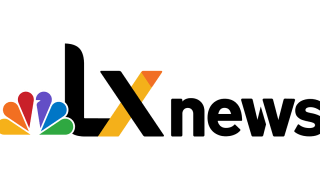As Pride month comes to a close next week, here's a look back at the rich history of the Gay Pride parade.
The Stonewall Rebellions June 28th, 1969
The New York Police Department raided the Stonewall Inn, a gay bar and well-known safe haven for people within the LGTBQ community. Raids on Stonewall and other bars in Greenwich Village were common, but this night - people, more specifically Black and brown trans folks, fought back. The clash led to a series of nights of unrest, which sparked the modern-day LGTBQ civil rights movement.
Although there had been similar uprising in cities on the West Coast prior to Stonewall, these riots were the first to garner a national audience.
1970s
In 1970 the Stonewall rebellion was commemorated with a march on the newly-named Christopher Street Gay Liberation Day. Marches happened in three cities that year in New York, Los Angeles and Chicago.
The marches included people from all over the country holding signs that read 'Gay Pride', 'Gay is good' and other uplifting messaging. The marches down major city streets eventually turned into a rally, where people would discuss injustices within the LGBTQ community.
Over time, the rallies eventually stopped because of a lack of interest.
1980s
The marches, however, continued to grow.
"If you look at the early videotapes that we have digitized, cars were still parked along the streets, they weren't cleared off like they are now. There were no barriers. They were much more casual events, casual gatherings of people," said Wil Brant, Executive Director of the Gerber/Hart Library & Archives.
Overseas, cities like London, Toronto and Manchester also started hosting their own Pride events.
The 1980's also marked the beginning of the AIDS crisis that was cutting down members of the LGBTQ community by the thousands. Many organizations, like ACT UP, used Pride as an opportunity to educate others and advocate for the LGBTQ community.
1990s
As early marches turned into elaborate and day-long parades, corporations and politicians started to take notice.
Major companies started to create Pride apparel, products, advertisements and others would even become financial sponsors for the parades happening in the country's largest cities. This shift allowed for more visibility, but many members of the LGBTQ community weren’t in support of the change and started their own, smaller marches.
In June of 1999, President Bill Clinton declared the first 'official' Gay and Lesbian Pride month. President Obama and Biden would follow suit decades later, with more inclusive language.
2000s
Members of the LGBTQ community continued to use Pride parades as a stage for protest, bringing new issues to the forefront. Same-sex marriage and 'Don't Ask Don't Tell' policies were big topics at the time.
The issue of diversity in Pride parades also started to grow. Although the smaller, more niche parades like the Chicago Dyke March started in the mid 90's, more people had become discontent with the lack of inclusion at Pride.
For example, UK Black Pride was formed in 2005 as a response to the lack of ethnic diversity in London’s Pride Parade. Over the years it's grown into the largest pride celebration for queer people of African, Asian, Middle Eastern, Latin American and Caribbean descent in Europe.
2010s - Now
Parades are longer and more elaborate than we've ever seen. Pride expands past the parade and is comprised of several different events, parties and fundraisers throughout the month of June.
Countries like Uganda, Vietnam, Bosnia and Herzegovina are holding their first-ever Pride parades or festivals.
During the COVID-19 Pandemic, most Pride parades were canceled. That led to the creation of Global Pride 2020, a virtual celebration where people from all around the world could tune in to a day of Pride.
And now that in-person parades are returning, the issue of corporate sponsorship has too.
“A lot of the members of the Reclaim Pride Coalition remember what pride looks like before it was a giant advertising event,” said Blake Pruitt with the Reclaim Pride Coalition. “With us there are no barricades separating the people in the streets from the people on the sidewalks. You just show up and march in the vein of the original Christopher Street Liberation March that took place the year after the Stonewall riots."
